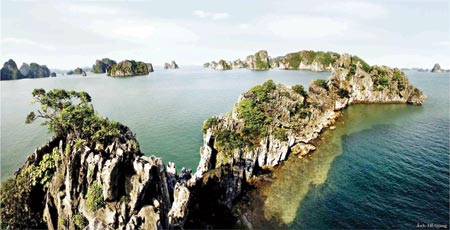The origin of the name
“Ha Long” means "Descending Dragon". Prior to the 19th century, this name had not been recorded in any documents or archives. It was known as Giao Chau, Luc Thuy, An Bang, An Quang, Hai Dong, Hoa Phong, Nghieu Phong, etc. Not until the late 19th century did the name Ha Long Bay appear on the Tonkin Gulf chart of the French.

"Haiphong News" published in French, reported: " Dragon appears on HaLong Bay". The story is summarized as follows: in1898, a sub-lieutenant named Lagredin, the captain of the Avalanse andmany sailors saw a pair of giant sea snakes in Ha Long bay. Europeans associated this animal as a dragon in the imagination of Asians. It was because of the appearance of this dragon-like animal that this sea was named Ha Long bay (according to “Quang Ninh Culture and Arts, from a perspective”, Quang Ninh, 2002)
The legend has it that Viet people are descendants of a Fairy and a Dragon, associated with the legend of dragons descending to help Viet people fight against invaders and protect the territory. "Once upon a time, soon after Viet people established their country, invaders came. The Jade Emperor sent Mother Dragon and her Child Dragons down to earth to help Viet people fight against their enemies. Right when invaders’ boats were rushing to the shore, the dragons landed down on earth. The dragons spat out numerous pearls, which then turned into thousands of stone islands and islets emerging in the sea like great walls challenging the invaders' boats. The invaders’ fast boats could not manage to stop, crashed into the islands and into each other, and broke into pieces. After the victory, Mother Dragon and Child Dragons did not return to Heaven but stayed on earth, right at the place where the battle had occurred. The place where Mother Dragon landed is nowadays Ha Long Bay and where Child Dragons descended is Bai Tu Long. The dragons' tails waving the water created Long Vi (present Tra Co peninsula, Mong Cai city, Quang Ninh province).
